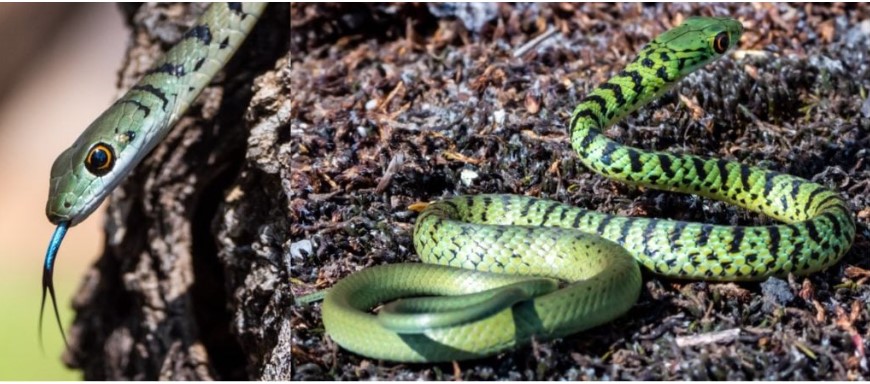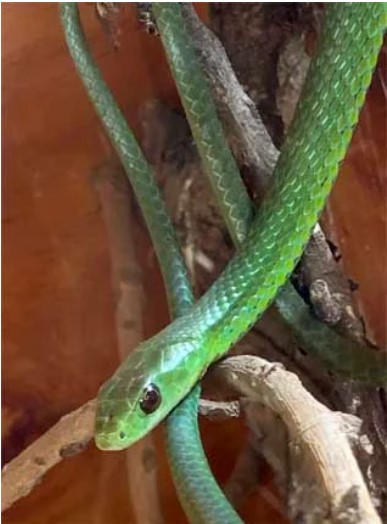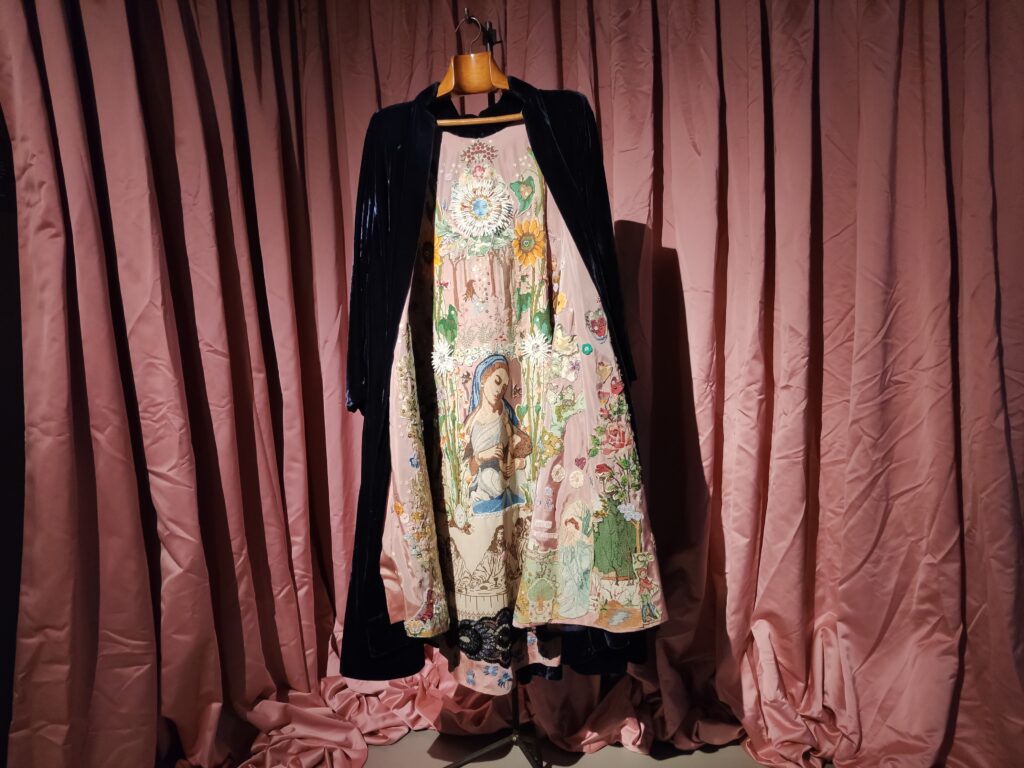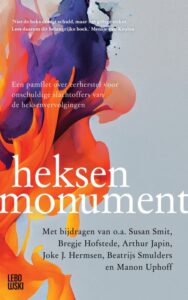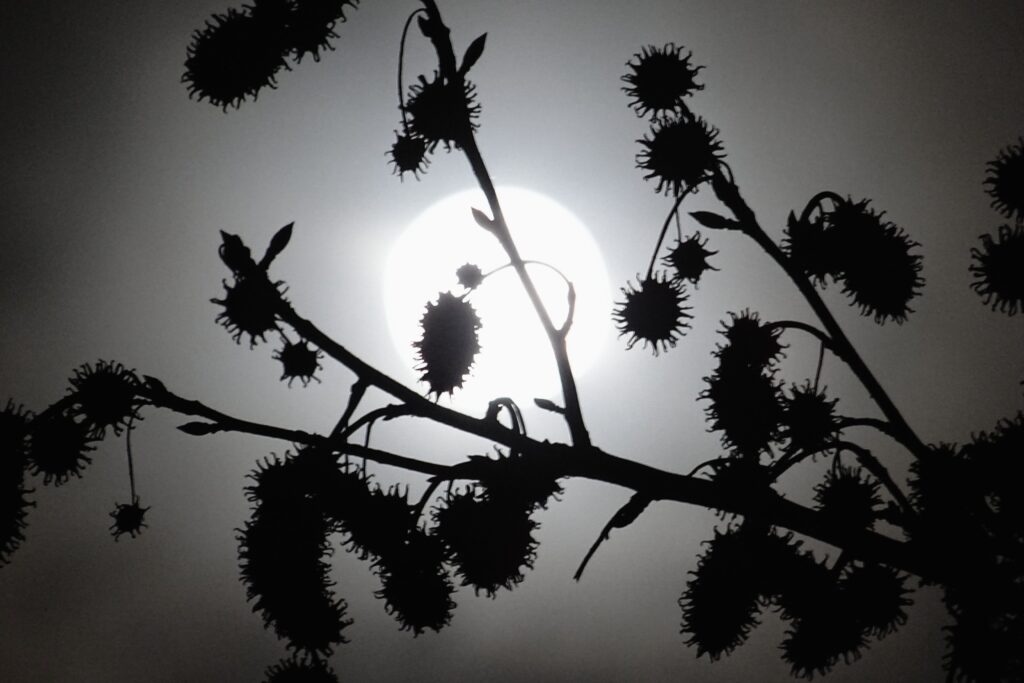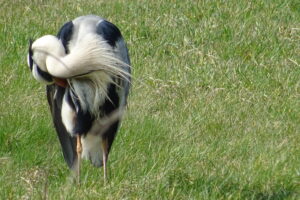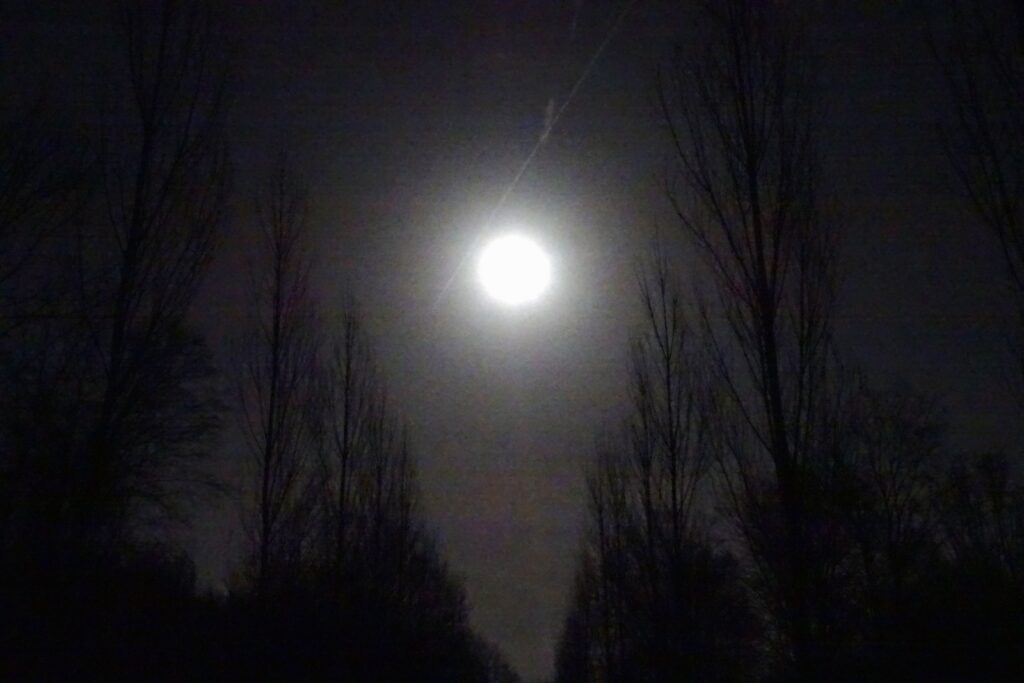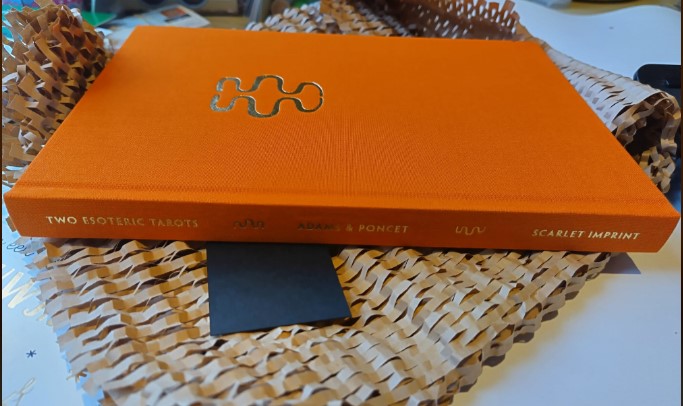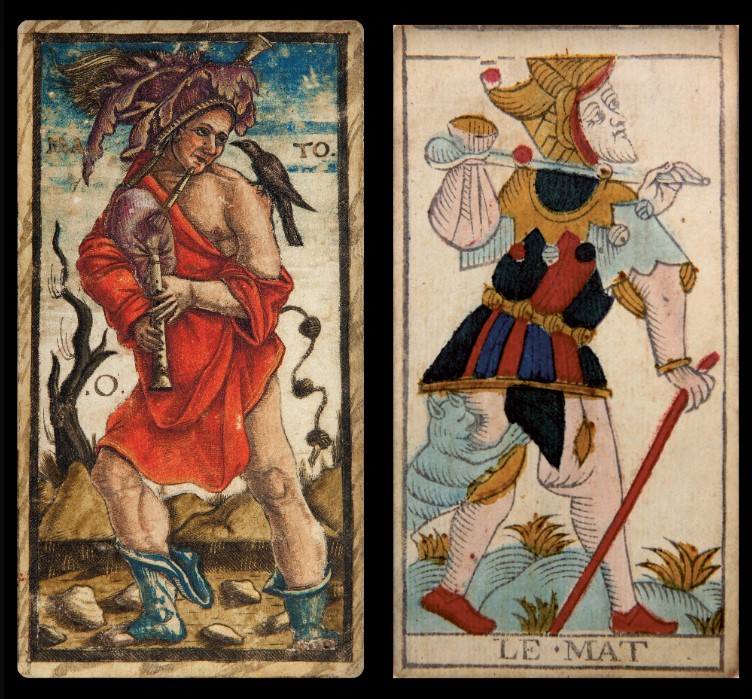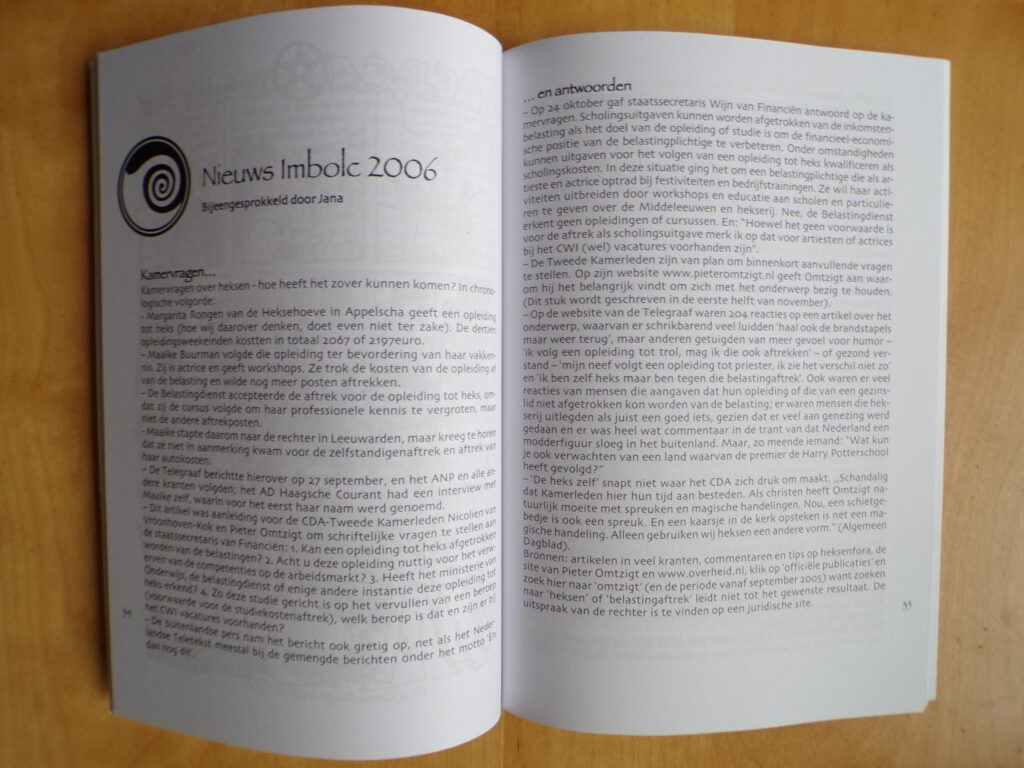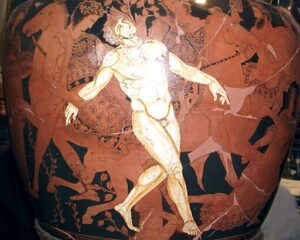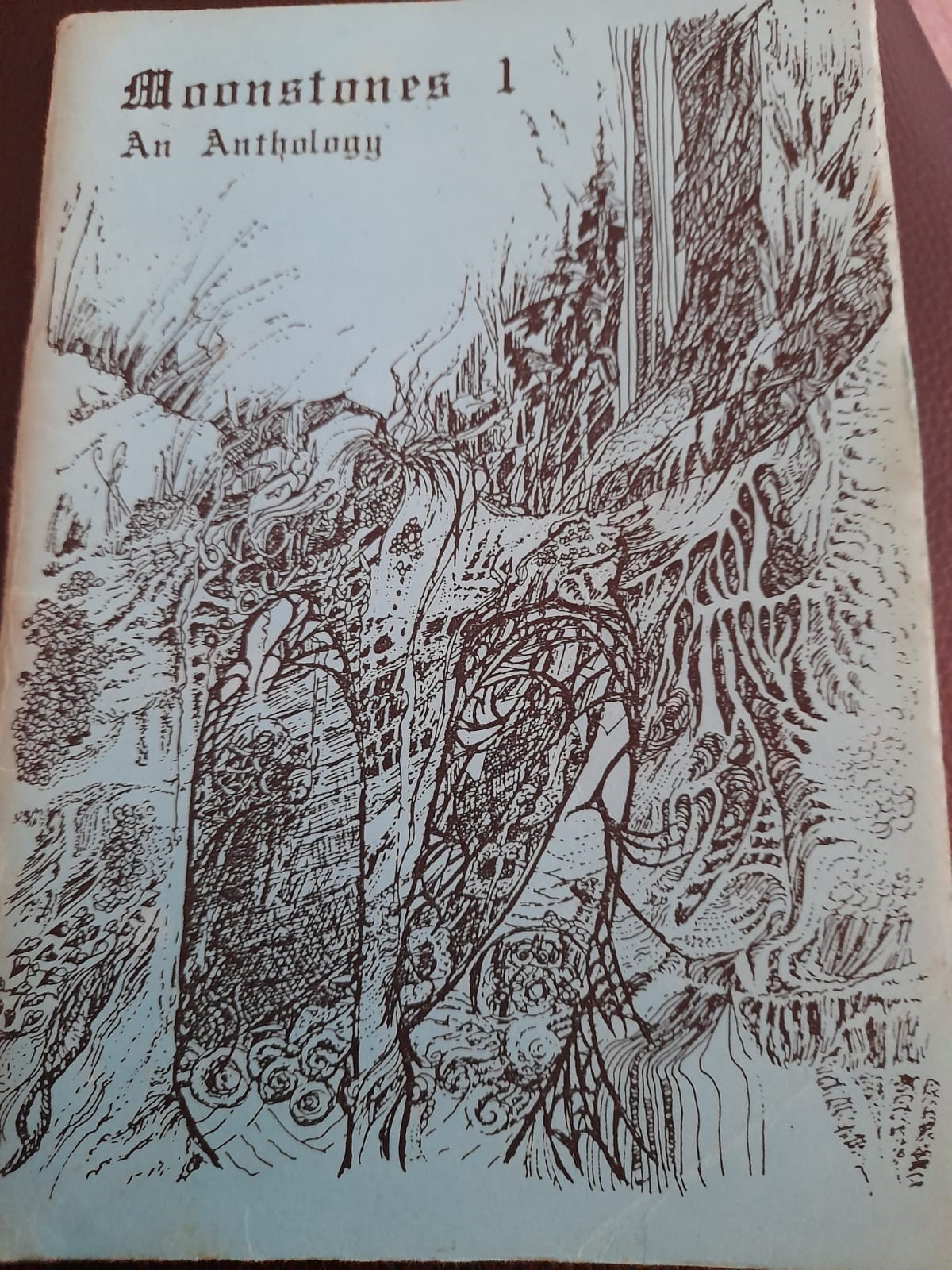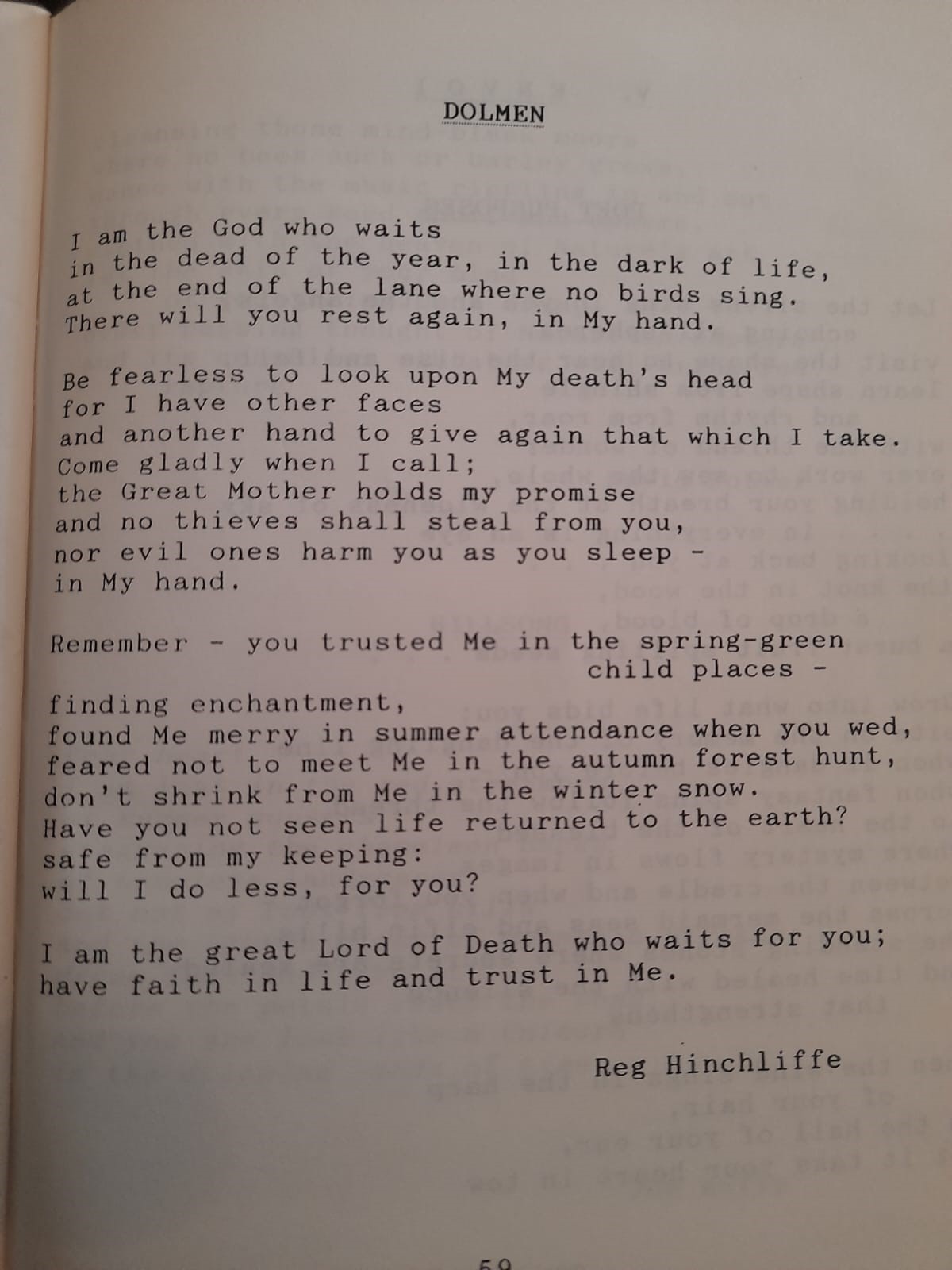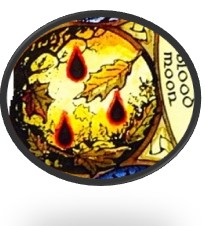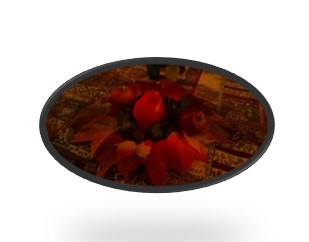Binnenkort kunnen we weer stemmen voor de Tweede Kamer. Wordt er daar ooit gesproken over heksen? En is er vanuit heksenstandpunt iets zinnigs te zeggen over de verkiezingsprogramma’s?
 Op 22 november 2023 zijn er verkiezingen voor de Tweede Kamer. Je kunt kiezen uit kandidaten van 26 partijen, waarvan er 20 meedoen in alle 20 kieskringen. De meeste partijen hebben hun verkiezingsprogramma al gepresenteerd. Valt er iets in op, als we kijken vanuit het oogpunt van heksen? Wat zeggen de partijen in hun verkiezingsprogramma over godsdienstvrijheid, en wat zeggen ze elders over magie, hekserij, wicca, alternatieve religies enz. Of als ze al in de Kamer zitten, hoe was dan hun stemgedrag?
Op 22 november 2023 zijn er verkiezingen voor de Tweede Kamer. Je kunt kiezen uit kandidaten van 26 partijen, waarvan er 20 meedoen in alle 20 kieskringen. De meeste partijen hebben hun verkiezingsprogramma al gepresenteerd. Valt er iets in op, als we kijken vanuit het oogpunt van heksen? Wat zeggen de partijen in hun verkiezingsprogramma over godsdienstvrijheid, en wat zeggen ze elders over magie, hekserij, wicca, alternatieve religies enz. Of als ze al in de Kamer zitten, hoe was dan hun stemgedrag?
Geen stemadvies
Verwacht van dit artikel géén stemadvies – daarvoor moet je zelf een kieswijzer raadplegen of de verkiezingsprogramma’s raadplegen van partijen die je aanspreken. We kijken hier met name naar wat de partijen zeggen over ‘religie’, en er zijn wel meer dingen die van belang zijn. Wat de partijen zeggen over natuur, milieu en klimaat, over kansengelijkheid en armoedebestrijding, over privacy, gelijkberechtiging, (alternatieve) gezondheidszorg, internationale solidariteit, … vul maar in wat voor jou van belang is. En dan nog: in de verkiezingsprogramma’s kan het allemaal nog zo mooi beschreven zijn, dat zegt nog niet dat een partij dat waarmaakt in de praktijk. Sommige partijen krijgen niet genoeg stemmeni om überhaupt in de Tweede Kamer te worden gekozen. De grootste partijen zullen proberen om een coalitie te vormen, en moeten dan over een aantal onderwerpen compromissen sluiten. En er zijn politici die het een zeggen, en voor het andere stemmen. Of die niet eens aanwezig zijn als een onderwerp wordt besproken. En het komt voor dat een partij heel in het algemeen beschrijft voor bepaalde mensenrechten te zijn, maar die dan eigenlijk voor zichzelf wil reserveren, en ze niet aan anderen gunt.
Wel stemadvies
Een snelle blik op de verkiezingsprogramma’s vind je via de StemWijzer, waar je via 30 stellingen ziet wat de plannen van politieke partijen in verkiezingstijd zijn. “Test je politieke voorkeur aan de hand van 30 stellingen.” Als je je eigen mening geeft over de stellingen, zie je wat de standpunten zijn van de partijen, en na nog een paar vragen krijg je een stemadvies. Als je het net anders invult, krijg je misschien een ander advies, dus doe vooral je huiswerk.
Via ‘StemmenTracker’ kun je checken hoe de partijen gestemd hebben sinds de vorige Tweede Kamerverkiezing. “Beantwoord 30 stellingen en krijg meteen te zien welke partijen aansluiten bij jouw mening. De StemmenTracker gaat over wat partijen hebben gestemd in de Tweede Kamer.” Net als bij de StemWijzer vind je er 30 stellingen waar je voor of tegen kunt zijn (of je kunt de stelling overslaan). Via ‘Uitslag stemming’ kun je zien welke partijen voor en welke partijen tegen stemden, en je kunt per partij klikken op hun standpunt. Of kijk zelf op overheid.nl naar onderwerpen die jou interesseren, en ga na hoe er gestemd is door de partijen.
Kamervragen over heksen

Nieuwsrubriek in Wiccan Rede, Imbolc 2006, met Kamervragen over heksenopleiding.
Heksen zijn vaker onderwerp van gesprek in de Tweede Kamer dan je denkt. Daarover straks meer. Ik weet uit mijn hoofd van één keer: de Kamervragenii die werden gesteld over belastingaftrek van een heksenopleiding. Zoals je kunt zien op de afbeelding van de nieuwsrubriek in de editie Imbolc 2006 van Wiccan Rede heb ik daar het hele verhaal al uit de doeken gedaan. Ik breng het graag in herinnering, omdat het mijn eerste kennismaking was met de man die nu zulke goede scores haalt in de peilingen met zijn ‘Nieuw Sociaal Contract’. Pieter Omtzigt stelde de vragen destijds samen met Nicolien Vroonhoven, die sinds september 2022 fractiemedewerker en partijwoordvoerder is van Pieter Omzigt en 2 staat op de lijst van NSC, direct achter lijsttrekker Omtzigt.
Destijds verwees ik naar de website www.pieteromtzigt.nl, waar hij zelf aangaf waarom hij het belangrijk vond zich met dat onderwerp bezig te houden. Helaas heb ik geen screenshots, en geeft het Internet Archive niet die pagina. Wel de Kamervragen en antwoorden daarop zelf, maar die kenden wel al. Op 18 december 2005 staat op de homepage ‘Nog een keer heksen?’ (onder een vermelding van ‘Heksen bij de BBC World Service’), maar die achterliggende pagina’s zelf zijn niet gearchiveerd. We moeten het doen met een screenshot van https://web.archive.org/web/20050101000000*/www.pieteromtzigt.nl van 18 december:

Heksen in de Tweede Kamer
Op de website https://zoek.officielebekendmakingen.nl/, onderdeel van overheid.nl, kun je de Kamerstukken vinden van de vergaderjaren 1994/1995 en alles recenter dan dat. Als je zoekt naar ‘heks’ of ‘heksen’, blijkt dat die woorden 68 maal ter sprake zijn gekomen in de Tweede Kamer.
In veel gevallen blijken er uitdrukkingen te zijn gebruikt zoals ‘heksenjacht’ of wordt gezegd dat iemand een heks werd genoemd (een minister, een Kamerlid en een journalist, allen vrouw). Soms noemt iemand een ander een heks, bijvoorbeeld omdat die persoon slecht is of misdaden heeft gepleegd. Een citaat van een jonge vrouw zegt dat ‘toen onze kleine heks werd geboren’, waarmee ze haar baby bedoelt (niet in slechte zin).
Een hele reeks vermeldingen valt toe te rekenen aan één minister, (Eric) Wiebes van Economische Zaken en Klimaat, die vaak uitdrukkingen gebruikt zoals “ik kan niet heksen”, “ik probeer te heksen”en “Heksen lukt mij niet”. Het ontlokt de heer Futselaar (SP) in debat over de begroting van Economische Zaken de uitspraak: “De minister zegt dan: ik doe mijn best, maar ik kan niet heksen. Tenminste, dat zegt de minister vaak.” En dat klopt. Maar recent was het minister (Mark) Harbers die het toverstokje overnam: “En waar het om capaciteit gaat: ik kan heksen, maar niet toveren. Dat is ongeveer de korte samenvatting.” (Bron: Tweeminutendebat Water, 2023). En minister Harbers in 2022: “Tegelijkertijd kan niemand in dit land toveren, heksen of mensen dwingen om bij Schiphol te werken.” Misschien moeten deze VVD-ministers eens navraag doen naar de heksenopleiding waarvoor destijds wel degelijk belastingaftrek werd gegeven. Blijkbaar is het een nuttige opleiding voor ministers in het Nederlandse kabinet!
Meer heksen in de Tweede Kamer

De bronzen ‘automaton’ (robot) Talos of Talon. Forzaruvo94, CC BY-SA 3.0 <https://creativecommons.org/licenses/by-sa/3.0>, via Wikimedia Commons
In andere gevallen ging het om de vermelding van heksenvervolgingen in het verleden, ook met de boodschap dat destijds mensen ten onrechte kwaad is berokkend. Het ging over de vervolging van ‘heksen’ in Afrika vandaag de dag, over ‘georganiseerd ritueel misbruik’ (de ‘satanic panic’) en in een rapport over AI stond: “Volgens de mythe werd deze robot verslagen door de heks Medea, die hem misleidde om zichzelf onklaar te maken”.
In een rapport over de Leerplichtwet heeft een ouderpaar bezwaar “tegen het onderwijs op protestants-christelijke scholen: omdat daar bijvoorbeeld wordt meegedaan aan het Sinterklaasfeest. Ook worden daar sprookjes als thema’s gebruikt waarbij kinderen zich verkleden als heksen en andere wezens. Verdachte is van mening dat dit soort occultisme bestreden moet worden omdat de Bijbel het zich bezighouden met bijgeloof en occultisme verbiedt. Vanuit haar geloofsovertuiging mogen de kinderen van verdachte niet worden blootgesteld aan dergelijk occultisme.”
In een overleg naar aanleiding van het Parlementair onderzoek uitvoeringsorganisaties zegt de heer Kruiter (van – bureau – IPW): “Maar ik zeg weleens: in Nederland gaan we met zelfredzaamheid om zoals we in de middeleeuwen testten of iemand een heks was. We gooiden iemand in de plomp. Als ze verdronken, waren ze geen heks. Dat doen we nu ook. We gaan ervan uit dat mensen zelfredzaam zijn, tot we ze terugvinden in de schulden, in de maatschappelijke opvang of op straat. Dan zeggen we: o nee, toch niet.”
‘Als een heks op een bezemsteel’
Minister Liesbeth Spies (CDA) was in 2011-2012 minister van Binnenlandse Zaken en Koninkrijk relaties. Kort voor haar vertrek als minister zegt ze in een debat over arbeidsmigranten: “Tegen de heer Van Weyenberg kan ik zeggen dat ik heb beloofd dat ik ze niet alleen hinderlijk wil stalken, maar desnoods ook als heks op een bezemsteel achter deze en gene aan wil gaan. Daar moet de Kamer echter waarschijnlijk binnenkort een ander voor inhuren.” In een volgend overleg komt het Kamerlid daarop terug.
“De minister heeft toen gezegd «als een heks op een bezemsteel» achter deze en gene aan te zullen gaan. Voorzitter, u kunt mijn vraag wel raden: met welk beeld over de rol van deze minister zal ik dit algemeen overleg verlaten? Gebruikt hij ook een bezemsteel of doet hij het anderszins? Hoe pakt hij deze aanjagende rol op?”
De opvolger, minister Stef Blok (VVD), antwoordt: “Tegen de heer Van Weyenberg zeg ik dat ik die rol als heks niet zie. Op het ministerie is men blij dat die bezemsteel eindelijk weg is. Volgens mij heb ik die ook niet nodig. Ter voorkoming van misverstanden: dit geldt niet voor mevrouw Spies, maar wel voor die bezemsteel.”
Geen heks maar wel…
In 2012 werd gesproken over de rechtspositie van politieke ambtsdragers, en zes keer kwam het begrip (geen) heksenjacht voor. Bijvoorbeeld hier:
“De heer Koopmans (CDA): Voorzitter. Aanleiding voor dit debat is een inderdaad een uitzending van RTL Nieuws in verband met een aantal WOB-verzoeken. Die leverden een heleboel interessante informatie op, soms relevant, soms amusant. Voor degenen die uit zijn op een heksenjacht in verband met declaraties, kunnen wij de conclusie trekken dat er geen heks te vinden is. Wel zijn er een paar kabouters gevonden en dan ook nog lelijke. Daarom is het goed om daar even met de minister over te spreken.”
Schelden doet zeer
Minister Hennis-Plasschaert begint er in 2016 zelf over in een debat over de Defensiebegroting: “Terwijl ik dit zeg, denk ik: de heer Van Dijk denkt nu vast ‘kille heks’.” En minister Kaag zegt in een debat over buitenlandse zaken in 2020: “Bij het woord «bezweringsformule» moet ik een beetje denken aan heksen of tovenaars. Ik herken mij niet in deze rol.”
Maar vaak zijn het toch echt anderen die ministers (zeker ook minister Sigrid Kaag), Kamerleden en andere vrouwen uitmaken voor ‘heks’. Omdat het vrouwen met macht zijn? Omdat die anderen geen inhoudelijk verweer hebben? Omdat het helemaal de trend is op een aantal sociale media om iedereen met wie je het oneens bent weg te zetten als ‘heks’ of met vergelijkbare termen? Vriendelijk is het zeker niet bedoeld. En de meeste Kamerleden vinden het gelukkig ook verkeerd. Een paar voorbeelden:
Mevrouw Karimi (in een debat over naamloze en besloten vennootschappen in 2021):
“Vrouwelijke leiders die een eigen stijl hebben en die het machtsspel in dit land niet volgens mannelijke methodes willen spelen, hebben het ook hier heel erg moeilijk. Ze worden door sommigen respectloos behandeld en worden soms zonder gêne als heksen betiteld. In deze context is het voorliggende wetsvoorstel niets anders dan weer een stap in het verminderen van genderongelijkheid.”
In 2021 wordt gesproken over de terugkeer (of niet) van ‘IS-vrouwen’.
De heer Kuzu (DENK): “Ik zie uw fractievoorzitter woorden als ‘heks’ gebruiken op Twitter. Is dat het niveau dat we met elkaar moeten nastreven tijdens zo’n complexe …
De heer Markuszower (PVV): “We wilden niet alle heksen in Nederland beledigen … Het is geenszins onze bedoeling om heksen in Nederland te beledigen, maar de PVV neemt keihard afstand van geweld, dreigen met geweld of bedreigingen, wie ook de ontvanger is van bedreigingen.”
Mevrouw Van der Werf (D66): “Het standpunt dat ik hier namens D66 verkondig, is natuurlijk niet nieuw. Toen ik een paar weken geleden op Twitter reageerde op het terughalen van Ilham B. en haar kinderen was ‘heks’ nog een van de vriendelijkere reacties. Dat is overigens een woord dat door de collega’s uit deze Kamer inmiddels ook niet meer wordt geschuwd.”
Mevrouw Van der Plas (BBB):
“Ook wordt er in dit voorstel geen rekening gehouden met de bedreigende situaties die wij hier als collega’s voor elkaar creëren buiten de directe bereidingen om. Want wij maken elkaar hier nog weleens verdacht. We noemen elkaar hier ‘vergif’, ‘de bedrijfspoedel van Poetin’, ‘kwaadaardig’, ‘heks’, ‘fascist’, ‘racist’, ‘marionetten van het kartel’.”
Ik geef het laatste woord aan de heer Bontenbal (CDA):
“Laat ik het dan gewoon concreter maken. Stel dat bepaalde politieke leiders haatdragende taal spreken over bepaalde Ministers, bijvoorbeeld door hen «heks» te noemen of wat dan ook, en dat het daadwerkelijk leidt tot bedreigingen van die Ministers. Taal doet toch iets? U zegt: mensen hebben die onvrede al en dat kanaliseren ze door op zo’n politieke partij te stemmen. Maar een taal creëert toch ook een werkelijkheid? Een taal kan toch ook uiteindelijk leiden tot haat en geweld? Het is toch juist ontzettend naïef om te denken: mensen hebben een ventiel en dan zijn ze het kwijt?”
Taal doet iets, inderdaad. Met elke keer dat het woord ‘heks’ als scheldwoord wordt gebruikt, wordt er een oud archetypisch beeld bevestigd. Maar gelukkig wordt er ook bezwaar aangetekend tegen dat scheldwoord, en wordt soms in herinnering gebracht dat tijdens de heksenvervolgingen mensen ten onrechte werden beschuldigd en erger.
Wicca in de Tweede Kamer
Ter informatie: het woord ‘wicca’ komt twee keer voor op diezelfde website met ‘Officiële publicaties’. Eenmaal in 2004, en daarna pas weer in een rapportiii van augustus 2023: “Rechtsextremisme op sociale mediaplatforms?”. In het hoofdstuk ‘Trials op YouTube en TikTok’ gaat het over het persona: “Het persona dat is gebruikt in de trials op YouTube, is een persoon die zich interesseert in de Vikingcultuur binnen het (neo-) paganisme/heidendom. Zoals aangegeven in paragraaf 3.7 vallen onder het neo-heidendom religies die de natuur als heilig en bezield ervaren, waaronder Wicca en de Noorse religies Odinisme en Asatru. De Vikingcultuur is hieraan nauw verwant. De neo-paganistische gemeenschap is grotendeels progressief, maar oefent aan de randen ook aantrekkingskracht uit op sommige rechts-extremistische groepen (De Zutter, 2010). Deze aantrekking ligt vooral in de ‘eigen’ voorchristelijke cultuur, vrij van diversiteit en migratie (De Wit, 2000). De focus ligt hierbij onder andere op de pseudowetenschappelijke theorie dat Europa oorspronkelijk enkel door ‘pure blanken’ werd bevolkt en de bijhorende wens om dit te herstellen en behouden. Sommige aanhangers van Noorse tradities keren zich tegen het multiculturalisme en nemen hierbij soms rechtsextremistische standpunten in (De Zutter, 2010).”
Met als voetnoot: Zwissler, L. (2018). New Age, Wicca and Paganism. International Encyclopaedia of Anthropology, 1-11. Geraadpleegd via: https://www.academia.edu/download/67678668/New_Age_Wicca_Paganism_International_Encyclopedia_of_Anthropology.pdf
In de Nota ‘Grondrechten in een pluriforme samenleving’ (Kamerstuk 29 614, nr. 2iv) staat als noot:
“Vgl. in deze zin ECRM, X vs. VK, 4 oktober 1977, zaaknr. 7291/75: «It is evident that such facilities (for the manifesting of his religion) are only conceivable if the religion to which the prisoner allegedly adheres is identifiable. The Commission observes that in the present case the applicant has not mentioned any facts making it possible to establish the existence of the Wicca religion.»”
Maar terug naar de verkiezingen in 2023.
StemWijzer over controle op religieuze groepen
Een van de stellingen in de StemWijzer gaat over controle op religieuze groepen:
“De overheid moet strenger controleren wat jongeren leren bij kerken, moskeeën en andere organisaties die les geven op basis van een levensbeschouwing. Wat vinden de partijen?”
Daaruit zou moeten blijken dat geen enkele partij het eens-noch-oneens is met deze stelling. Eens met de stelling zijn: VVD, D66, GL-PvdA, PVV, SP, JA21, 50Plus, BVNL, Splinter en LEF.
Oneens met de stelling zijn volgens de StemWijzer: CDA, FVD, PvdD, ChristenUnie, Volt, SGP, DENK, BBB, Bij1, Piratenpartij – De Groenen, NSC, Libertaire Partij en Samen voor Nederland. Bij sommige partijen zou ik zelf hebben gezegd dat ze het ‘eens’ zijn, tenzij.
Maar interessanter is het om te kijken wat de partijen zelf in hun verkiezingsprogramma’sv hebben staan over godsdienstvrijheid.
Er even van uitgaand dat hekserij / wicca een religie is – ik weet dat met name Alexandrians er anders over denken – en ervan uitgaand dat heksen streven naar de vrijheid om die religie te beleven, dan zijn op het oog dit de beste partijen waar je als heks op kunt stemmen: ChristenUnie, DENK, NSC en, met een kanttekening, Splinter. Op het oog, want nogmaals: een programma kan mooi verwoord zijn, maar zegt niet altijd dat de partij het ook uit gaat dragen. En er zijn wel meer aspecten dan alleen godsdienstvrijheid die je wilt meewegen bij het uitbrengen van je stem.
ChristenUnie: “De vrijheid van godsdienst, vereniging, onderwijs en meningsuiting zijn belangrijke pijlers van de manier waarop we samenleven en mogen niet worden aangetast. Deze vrijheden gelden voor iedereen, juist ook voor minderheden. De gedachte dat vrijheid alleen geldt als je dingen doet of zegt die passen bij de seculier-liberale opvattingen van de meerderheid vormt een bedreiging voor de Nederlandse traditie van openheid, vrijheid en tolerantie.
De mensheid leeft in de verbanden van naties en volken, maar is wezenlijk één. We zijn met elkaar verbonden als medeschepselen en Gods zon schijnt over ons allemaal.”
Mooie taal. Maar uit de media weten we dat ChristenUnie-coryfeeën en hun achterban moeite hebben met van alles dat niet in hun denkraam past. We kennen de jaarlijkse artikelen in een aantal christelijke kranten als Halloween eraan komt. Is ‘hekserij’ of ‘magie’ het thema van de kinderboekenweek, dan wordt dat aan de kaak gesteld en de achterban en de buitenwereld worden gewaarschuwd voor ‘het gevaar van wicca’. Maar het is erger:
NRC onthulde de ‘gumcultuur’ onder uitgevers van schoolboeken voor het basisonderwijs. Onder druk van christelijke lobbygroepen wordt er driftig gecensureerd: ‘discutabele theorieën’ zoals ‘evolutie’, ‘ver doorgevoerde vormen van emancipatie’ en wezens als spoken, draken en heksen – het is allemaal taboe. “Sprookjesfiguren liggen gevoelig bij gereformeerde scholen”, verklaarde een uitgever, een uitspraak die menig atheïst een bulderlach zal ontlokken. Maar laat ik hier niet een bestaat-God-wel-of-niet-spelletje van maken. Dat is niet de kwestie. ChristenUnie-leider Gert-Jan Segers reageerde via Twitter op het NRC-artikel: “Veel liberalen zijn nu vooral voor de vrijheid om te zijn zoals ze zelf zijn. Alles wat afwijkt, moet verboden worden. Beklemmend.”
Trouw, 17 oktober 2021, onder de titel: Censuur wordt gepresenteerd als vrijheid en de openheid van het liberalisme als een dwangbuis.
“DENK koestert de aanwezigheid en de rol van religie in ons land. Er dient meer erkenning te komen voor de onmisbare meerwaarde van religieuze gemeenschappen. Vanuit deze overtuiging spreken wij onze waardering uit voor de grondwettelijke vrijheid van religie die steeds meer onder druk komt te staan.
Vrije dagen voor verschillende religieuze feestdagen. Naast de christelijke feestdagen moeten ook de belangrijke feestdagen van andere religies wettelijk worden erkend, zoals het Ramadanfeest (Eid ul-Fitr), Holi, Diwali, Jom Kippoer, Vaisakhi en het Offerfeest (Eid ul-Adha).
DENK wil een recht op verlof voor leerlingen en medewerkers op hun religieuze feestdagen. Dit respecteert en erkent de diversiteit van onze samenleving en zorgt voor inclusie binnen ons onderwijssysteem.”
NSC: “Onze nationale staat biedt culturele en religieuze gemeenschappen ruimte om zich te organiseren en te uiten. Het recht op godsdienstvrijheid en levensovertuiging, van vereniging en van meningsuiting is grondwettelijk verankerd. Vreedzaam samenleven is echter alleen mogelijk als de overheid deze vrijheden voor iedereen op een gelijke manier waarborgt. Dat hebben we in de afgelopen eeuwen met vallen en opstaan geleerd. Een basiswaarde is dat mensen en groepen de rechten die zij zelf opeisen ook aan anderen moeten gunnen. Een sociaal contract vraagt om acceptatie van andersdenkenden, een besef van wederkerigheid en een afkeer van bedreiging/geweld. De rechtsstaat dient de menselijke waardigheid en de persoonlijke gewetensvrijheid te borgen, maar kan hooguit het onderlinge respect bevorderen.”
Splinter: “Nog te vaak leiden traditie, religie, en familie tot groepsdwang. Op wie afwijkt of anders denkt, wordt druk uitgeoefend om zich te conformeren, in het ergste geval op straffe van geweld. Splinter komt voor hen op. Als sommigen in Nederland zich niet ten volle kunnen ontplooien, dan is de mogelijkheid om het leven naar eigen inzicht vorm te geven van alle Nederlanders in het geding. Vrijheid van de een, is afhankelijk van de mate waarin de ander vrij is.
De open samenleving wordt gekenmerkt door een vreedzame strijd van ideeën, waarbij het beste idee steeds aan invloed wint. Geen enkel idee, religieus of profaan, is in het vrije Nederland boven kritiek verheven.
Maar deze partij zegt ook: “Aparte vermelding van de vrijheid van godsdienst in de Grondwet wordt geschrapt. Alle vrijheden waarop gelovigen aanspraak kunnen maken, zoals de vrijheid van meningsuiting (artikel 7 Gw), vrijheid van vereniging (artikel 8 Gw), vrijheid van vergadering en betoging (artikel 9), zijn al veilig verankerd in de wet en in de Universele Verklaring van de Rechten van de Mens.”
Nog een paar mooie passages van andere partijenvi:
GroenLinks – Partij van de Arbeid:
“In een gelijkwaardig land horen alle kinderen dezelfde basis te krijgen. Goede lessen over burgerschap zijn belangrijk voor het vertrouwen in elkaar en in de samenleving. Kerken en moskeeën mogen daar zelf invulling aan geven, maar de onderwijsinspectie ziet toe op de kwaliteit van deze lessen.”
SP: “Discriminatie bestrijden we altijd en overal, op basis van klasse, kleur, seksuele geaardheid, religie, leeftijd, of wat ook.”
Partij voor de Dieren: “De PvdD staat voor godsdienstvrijheid. Deze stopt waar andere vrijheden in het geding komen, b.v. bij homofobie of haat jegens andere religies. Signalen daarvan moeten worden onderzocht en zo nodig moet de Onderwijsinspectie optreden. Maar zonder aanleiding streng controleren is discriminatie.”
VOLT: “We houden op met het financieren van religieus onderwijs. Voor een open samenleving is het nodig dat kinderen uit alle geloofsovertuigingen elkaar al op school kunnen leren kennen. Door te stoppen met het bekostigen van scholen die één of meerdere geloofsovertuigingen uitdragen, zullen kinderen met verschillende wereldbeschouwingen elkaar eerder ontmoeten en van elkaar leren. Voor het realiseren van dit voorstel is aanpassing van artikel 23 van de Grondwet nodig.”
JA21: “Naast het versterken van de democratische inspraak van Nederlanders, gaat JA21 ook zorgen voor een betere bescherming van onze grondrechten. Dit doen wij vanuit de gedachte dat de kracht van onze samenleving de democratische erkenning van verschillende visies, levenswijzen, religies en seksuele voorkeuren is. Om de vrije democratische samenleving te garanderen, dienen klassieke grondrechten en vrijheden als vrijheid van meningsuiting, het kiesrecht, vrijheid van vereniging en godsdienstvrijheid het fundament ervan te vormen. Voor JA21 is dit het strijden waard, waarbij politieke correctheid van minder groot belang is dan openheid, eerlijkheid en duidelijkheid.”
Een opvallend standpunt van de SGP: “Christenen hebben wereldwijd het meest te lijden onder vervolgingen. Op dit moment hebben zo’n 360 miljoen christenen te maken met dagelijkse onderdrukking en achterstelling omdat ze geloven in Jezus Christus. Nederland moet zich met alle mogelijke (diplomatieke) middelen inzetten om hen te steunen. Godsdienstvrijheid moet een expliciet speerpunt zijn van het buitenlandbeleid.”
Boer Burger Beweging: “Iedereen in Nederland verdient gelijke kansen. Racisme en discriminatie zijn ontoelaatbaar en strafbaar. Punt. Voor BBB maken kleur, leeftijd, afkomst, seksuele geaardheid, gender en religie niets uit. Discriminatie is verboden. Sollicitanten bij de overheid worden puur op kwaliteit beoordeeld, niet op persoonlijke kenmerken. Woningtoewijzing is gebaseerd op urgentie, niet op afkomst. Alle bevolkingsgroepen worden gelijk behandeld.”
Bij1: “Alle vormen van religieus onderwijs, scholen en gebedshuizen worden volgens gelijke criteria beschermd.
Er komt meer keuzevrijheid in het opnemen van vrije dagen op basis van religieuze overtuiging.”
Het volledige verkiezingsprogramma van LEF “staat zo spoedig mogelijk online”. De partij heeft wel een goed programma op natuur en ecologie, feminisme, diversiteit, cultuur, onthaasting.
Ook opvallend is ‘Samen voor Nederland’: “Kerk en staat dienen te allen tijde gescheiden te zijn en te blijven van elkaar.”
Religieuze kentekenen in overheidsdienst?
Een aantal partijen gaat specifiek in op het al dan niet dragen van religieuze kentekenen in overheidsdienst.
“D66 vindt de neutraliteit van de politie essentieel. Echter geloofsovertuiging is net zomin als geslacht, huidskleur en seksuele gerichtheid, reden om de neutraliteit van mensen in twijfel te trekken. Om die reden is D66 voorstander van het toestaan van religieuze uitingen als onderdeel van het politieuniform.”
GL-PvdA: “Ook ambtenaren en andere werknemers moeten in beginsel de zelfbeschikking hebben om zich vrij naar eigen levensovertuiging te kleden, inclusief religieuze uitingen.
Het verbod op religieuze uitingen bij de politie schaffen we af.”
PvdD: “Boa’s mogen een hoofddoek of keppel dragen of op een andere manier uiting geven aan hun religie.”
VOLT: “We pakken discriminatie op basis van religie aan. Volt is om die reden tegen het verbod op het dragen van een hoofddoek of andere religieuze uitingen voor politieagenten en andere mensen die bij de overheid werken.”
JA21: “Geen hoofddoekjes of andere religieuze uitingen bij politie, boa’s en andere overheidsdienaren die een publieke functie bekleden.”
DENK: “Secularisme is geen staatsatheïsme. DENK staat voor een samenleving waarin iedereen een plek heeft. Of je nou religieus bent, of niet. Wij constateren echter dat de publieke rol van religie in toenemende mate wordt geproblematiseerd. Secularisme, wat eigenlijk een neutrale overheid zou moeten inhouden waarin voor iedereen een plek is, wordt steeds meer uitgelegd als staatsatheïsme, waarbij religie wordt uitgebannen of met wantrouwen wordt benaderd.”
BBB: “In haar uitstraling verwachten we van de geüniformeerde diensten een neutrale opstelling, dat betekent dat er geen ruimte is voor zichtbare uitingen van politieke of religieuze overtuiging.”
BIJ1: “Ook het verbod op het dragen van een hoofddoek voor rechters, griffiers en bij de politie wordt opgeheven.”
Splinter: “Ieder mens moet zich vrij kunnen verbinden aan een geloof of overtuiging. Of zich veilig ervan kunnen losmaken. Dat kan alleen in een seculiere samenleving met een neutrale overheid. Een seculiere samenleving is een voorwaarde voor gelijkwaardigheid.
Splinter bepleit scheiding van kerk en staat. Religie is een privéaangelegenheid. De publieke ruimte is van ons allemaal en dient neutraal te zijn zodat iedereen zich vrij kan voelen.”
Tot slot
Dit is het resultaat van het doorvlooien van de verkiezingsprogramma’s op één punt. Misschien niet zozeer behulpzaam straks in het stemhokje, maar wel informatief of vermakelijk. Ik hoop wel dat je straks gebruik maakt van je recht om te gaan stemmen. In het verleden is ervoor gevochten dat we kiesrecht hebben, en het is in lang niet alle landen ter wereld zo vanzelfsprekend dat je mag stemmen. Of dat je keuze hebt uit zo’n groot aanbod van partijen en kandidaten. Bedenk ook dat jouw stem de doorslag kan geven of je favoriete partij een zetel (extra) haalt of niet. Als de reststemmen geteld worden, kan net die ene stem dat verschil maken. Magisch toch?



